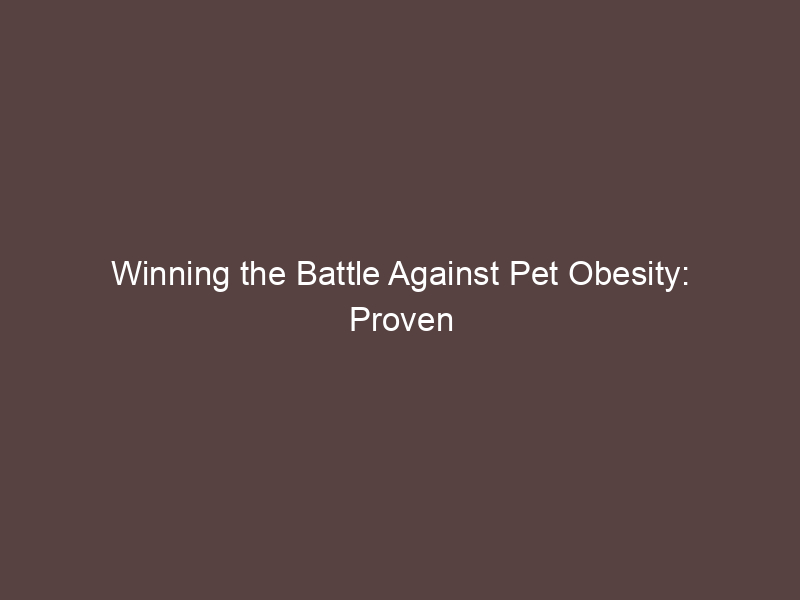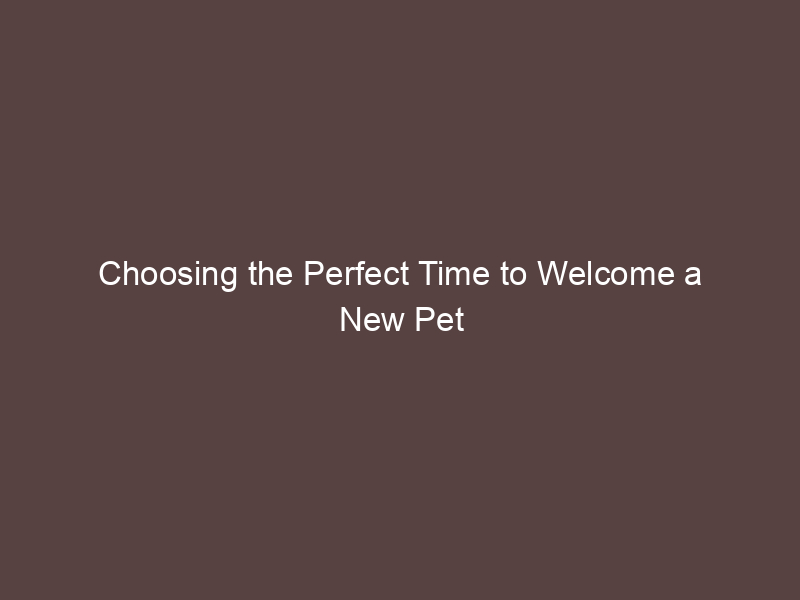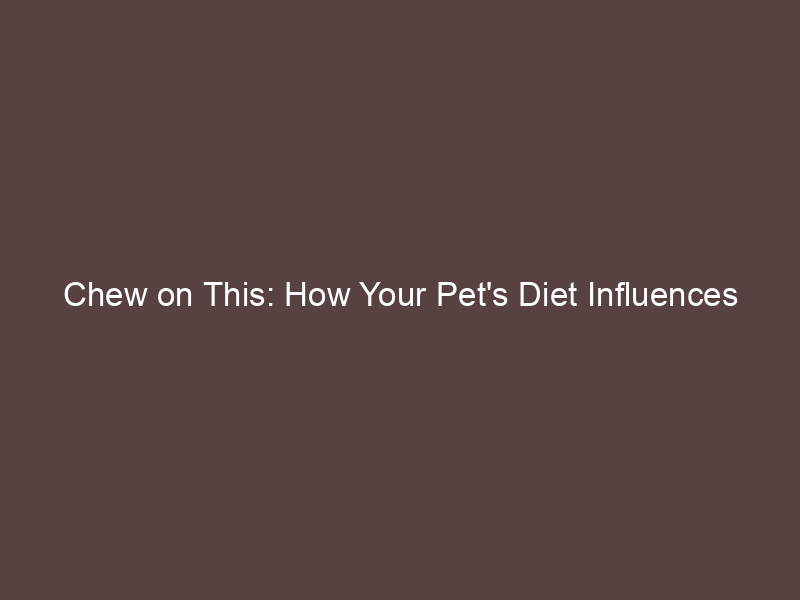Introduction to Pet Obesity
Hey there, pet parents! Today, we’re going to chat about a growing issue in the pet world – obesity. Just like humans, our furry friends can also struggle with weight issues. Let’s dive right in and learn more about this topic.
- Understanding the prevalence of pet obesity
- Why pet obesity is a concern
Did you know that pet obesity is a big deal? According to the Association for Pet Obesity Prevention, over 50% of dogs and cats in the United States are overweight. That’s a lot of chubby pets! This isn’t just a problem in the U.S., but it’s a global issue. Pets all over the world are packing on the pounds.
So, why should we worry about pet obesity? Well, just like in humans, obesity can lead to a bunch of health problems for our pets. Overweight pets are more likely to suffer from diseases like diabetes, arthritis, and heart disease. Plus, carrying around extra weight can make it hard for pets to enjoy their favorite activities, like chasing a ball or climbing a tree.
In the following sections, we’ll talk about how to identify if your pet is obese, how to prevent pet obesity, and how to manage it if your pet is already overweight. So, stick around and let’s keep our pets healthy and happy!
Identifying Obesity in Pets
It’s important to know how to spot obesity in our furry friends. Let’s start with our canine companions.
Obesity in Dogs
Dogs come in all shapes and sizes, but it’s essential to know what a healthy weight looks like for your pup. Here’s how to identify obesity in dogs:
- Recognizing signs of obesity in dogs
- Case study: Obesity in different dog breeds
Obesity in dogs can be a bit tricky to spot, especially if your pup is fluffy! But there are some signs you can look out for. If your dog has difficulty walking, gets tired easily, or has trouble breathing, it might be overweight. You should also check if you can feel your dog’s ribs. If you can’t, your dog might be carrying some extra pounds.
Did you know that some dog breeds are more prone to obesity than others? For example, Labradors and Bulldogs often struggle with weight issues. A study found that 41% of Labradors were overweight or obese! It’s important to know your breed’s risks and keep an eye on their weight.
Remember, it’s always best to consult with your vet if you’re worried about your dog’s weight. They can provide the best advice and help your pup get back to a healthy size.
Obesity in Cats
Just like humans, our feline friends can also struggle with weight issues. Let’s dive into the world of cat obesity and learn how to identify if your cat is overweight and the differences between indoor and outdoor cats when it comes to obesity.
- How to tell if your cat is overweight
It’s not always easy to tell if your cat is overweight just by looking at them. Here are a few signs that your cat might be carrying a few extra pounds:
- Body Shape: When viewing your cat from above, you should be able to see a waistline. If your cat looks more like a football than a feline, they might be overweight.
- Ribs and Spine: You should be able to feel your cat’s ribs and spine with a light touch. If you can’t, it’s possible your cat is overweight.
- Difficulty in Moving: If your cat has trouble moving, jumping, or playing, it might be due to excess weight.
Remember, if you’re unsure, it’s always best to consult with a vet. They can provide a proper weight assessment for your cat.
- Case study: Obesity in indoor vs outdoor cats
Now, let’s take a look at a fascinating case study comparing obesity in indoor and outdoor cats.
According to a Wikipedia article, indoor cats are more likely to become obese than outdoor cats. This is because indoor cats often have less opportunity for exercise and may be overfed. On the other hand, outdoor cats tend to have more physical activity and a more varied diet, which can help maintain a healthy weight.
| Indoor Cats | Outdoor Cats | |
|---|---|---|
| Exercise | Less | More |
| Diet | Often overfed | More varied |
| Obesity Risk | Higher | Lower |
However, this doesn’t mean that all indoor cats will become obese or that all outdoor cats will stay slim. It’s crucial to provide a balanced diet and plenty of exercise opportunities for all cats, regardless of their living situation.
Preventing Pet Obesity
Keeping your pet healthy and fit is not just about adding more years to their life, but also adding more life to their years! Let’s dive into some key ways to prevent pet obesity.
- The Role of a Healthy Pet Diet in Preventing Obesity
- Importance of Regular Exercise for Overweight Pets
- Key Takeaways on Pet Obesity Prevention
Just like humans, pets need a balanced diet to stay healthy. Overfeeding or giving your pet the wrong types of food can lead to weight gain and obesity. According to Wikipedia, a healthy pet diet should include proteins, carbohydrates, fats, vitamins, and minerals. Avoid giving your pet too many treats or human food, which can be high in calories and low in nutritional value. Remember, what works for us might not work for them!
Exercise is just as important for pets as it is for humans. Regular physical activity helps maintain a healthy weight and keeps your pet’s heart, lungs, and muscles strong. It also helps them burn off energy and stay mentally stimulated. Whether it’s a daily walk, a game of fetch, or a fun agility course, make sure your pet gets plenty of exercise every day.
Preventing pet obesity is all about balance. Feed your pet a healthy diet, make sure they get plenty of exercise, and monitor their weight regularly. If you notice your pet gaining weight, it’s important to consult with a vet. They can provide guidance on diet changes, exercise routines, and other strategies to help your pet get back to a healthy weight.
Remember, every pet is unique. What works for one might not work for another. It’s always best to consult with a vet to create a personalized plan for your pet’s health and wellness.
Pet Obesity Management
Managing pet obesity is a crucial part of ensuring your furry friend’s health and happiness. Let’s dive into some strategies for pet weight control and share some successful weight loss stories for pets.
Pet Weight Control
Weight control in pets is all about balance. It’s about finding the right mix of diet and exercise that suits your pet’s needs. Here are some strategies to help manage your pet’s weight:
- Strategies for managing your pet’s weight:
- Example: Successful weight loss stories for pets:
Firstly, it’s important to consult with your vet to understand what a healthy weight for your pet is. They can provide a diet plan tailored to your pet’s needs. Regularly weigh your pet and adjust their food intake as needed. Remember, it’s not just about reducing food quantity, but also about improving food quality. Opt for high-protein, low-fat pet foods.
Secondly, ensure your pet gets regular exercise. This could be a daily walk for dogs or play sessions for cats. Exercise not only helps burn calories but also keeps your pet mentally stimulated.
Lastly, limit treats and avoid giving your pet human food. Treats should make up no more than 10% of your pet’s daily calorie intake. As for human food, it can be high in fat and sugar, which is not good for your pet’s health.
Meet Max, a golden retriever who was 20 pounds overweight. With a carefully controlled diet and regular exercise, Max managed to lose the extra weight in 6 months. His owner reported that Max is now more energetic and happier.
Then there’s Whiskers, a tabby cat who was 5 pounds overweight. Whiskers’ owner switched her to a high-protein diet and introduced interactive toys to encourage more playtime. In 4 months, Whiskers reached her target weight.
These stories show that with dedication and the right strategies, pet obesity can be managed successfully. Remember, it’s not just about weight loss, but about improving your pet’s overall health and quality of life.
Exercise for Overweight Pets
Just like humans, pets need exercise to stay healthy. But if your furry friend is carrying a few extra pounds, it’s important to introduce exercise slowly and safely. Here’s how.
- How to Safely Introduce Exercise to Overweight Pets
- Examples of Effective Exercises for Overweight Pets
- Walking or Jogging: This is a great exercise for both dogs and cats. Start with a short, slow walk and gradually increase the distance and pace.
- Playing Fetch: This game is not only fun for your pet, but it also provides a good workout. Use a toy or ball that’s appropriate for your pet’s size.
- Swimming: If your pet likes water, swimming can be a great low-impact exercise. Always supervise your pet while they’re in the water.
- Interactive Toys: Toys that encourage your pet to move and play can be a great way to get them exercising. Look for toys that your pet can chase, pounce on, or bat around.
Before starting any new exercise routine, it’s always a good idea to check with your vet. They can give you advice on what types of exercise are best for your pet’s breed, age, and current weight. Start slow, with short walks or gentle play sessions. Gradually increase the length and intensity of the exercise as your pet gets fitter. Remember, the goal is to help your pet lose weight, not to exhaust them!
There are many fun and effective ways to help your pet get moving. Here are a few examples:
Remember, the key to helping your pet lose weight is consistency. Make sure they get regular exercise and monitor their progress. With patience and persistence, your pet can reach a healthy weight and enjoy a happier, healthier life.
Healthy Pet Diet
When it comes to keeping our furry friends healthy, diet plays a huge role. Let’s dive into the world of pet nutrition and explore how to choose the right food for your pet’s weight control.
Pet Nutrition
Understanding pet nutrition can seem like a big task, but don’t worry, we’ve got you covered!
- Understanding the basics of pet nutrition
- Choosing the right food for your pet’s weight control
- Look for food that’s high in protein and low in fat. This can help your pet feel full without consuming too many calories.
- Consider your pet’s age, size, and activity level. A small, inactive dog will need fewer calories than a large, active one.
- Don’t forget about portion control. Even healthy food can lead to weight gain if your pet eats too much of it.
Just like humans, pets need a balanced diet to stay healthy. This means they need a mix of proteins, carbohydrates, fats, vitamins, and minerals. Proteins help build strong muscles, carbohydrates provide energy, and fats keep their skin and coat healthy. Vitamins and minerals are essential for various body functions. Remember, every pet is unique, so their nutritional needs may vary. For more detailed information, you can check out this Wikipedia article on pet nutrition.
Choosing the right food for your pet can help them maintain a healthy weight. Here are a few tips:
Remember, it’s always a good idea to talk to your vet before making any major changes to your pet’s diet.
Portion Control for Pets
Just like us humans, our furry friends also need to watch their portion sizes. Too much food can lead to weight gain and health problems. But don’t worry, we’ve got some handy tips to help you keep your pet’s portions in check.
- Tips for maintaining portion control in pets
- How portion control contributes to pet weight control
Firstly, it’s important to understand that every pet is different. What works for a big, active dog won’t work for a small, less active cat. So, the first step is to talk to your vet about your pet’s specific dietary needs.
Next, measure your pet’s food. It’s easy to just fill up the bowl, but this can lead to overfeeding. Use a measuring cup to make sure you’re giving your pet the right amount.
Also, try to stick to a feeding schedule. This helps your pet know when to expect food and can prevent overeating.
Lastly, be mindful of treats. They’re a great way to reward your pet, but they can also add extra calories. Try to limit treats and make sure they’re included in your pet’s daily calorie count.
Portion control is a key part of weight control. By making sure your pet is getting the right amount of food, you can help prevent weight gain and obesity. Overweight pets can suffer from a range of health problems, like heart disease and arthritis. So, keeping your pet at a healthy weight is really important for their overall health.
Remember, portion control isn’t about starving your pet. It’s about making sure they’re getting the right amount of food for their size, age, and activity level. By following these tips, you can help keep your pet healthy and happy.
Conclusion: Winning the Battle Against Pet Obesity
As we wrap up our discussion on pet obesity, it’s important to remember that this is a battle we can win. With the right knowledge and tools, we can ensure our furry friends live long, healthy, and happy lives. Let’s take a moment to recap what we’ve learned:
- Recap of proven tips and tricks for pet obesity management: We’ve discussed various strategies to help manage pet obesity. Regular exercise, portion control, and a balanced diet are key. Remember, it’s not just about reducing food intake but also about providing nutritious meals. Regular vet check-ups are also crucial to monitor your pet’s weight and overall health.
- Final thoughts on maintaining a healthy lifestyle for your pet: Pet obesity is not just a physical issue; it’s about overall wellbeing. A healthy pet is a happy pet, and a happy pet makes a happy home. It’s our responsibility as pet owners to provide the best care possible for our pets. This includes not only providing a healthy diet and regular exercise but also plenty of love and attention.
Remember, every pet is unique, and what works for one may not work for another. It’s important to tailor your pet’s diet and exercise routine to their specific needs and preferences. And always consult with a vet before making any major changes to your pet’s lifestyle.
Winning the battle against pet obesity is a team effort. Together, we can ensure our pets live the long, healthy lives they deserve.






